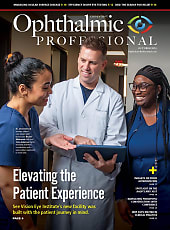Researchers at the National Institutes of Health have developed a novel surgical technique that enables the implantation of multiple tissue grafts into the retina. The technique, which was tested in an animal model, may facilitate higher treatment coverage and provide improved evaluation methods for retinal cell therapies.
Stem cell–derived retinal pigment epithelial (RPE) grafts are being investigated as a treatment approach for dry age-related macular degeneration (AMD), including in ongoing first-in-human clinical trials led by the National Institutes of Health (NIH). However, current surgical techniques allow for the placement of only 1 graft per retina. This limitation restricts both the treatment area and the ability to perform intraocular comparisons of different graft designs.
To overcome these constraints, NIH investigators engineered a surgical clamp that stabilizes intraocular pressure during the sequential implantation of two tissue patches while minimizing trauma to surrounding tissue. Using this tool in a preclinical model, researchers implanted 2 different grafts side by side in the same AMD-like lesion. Graft 1 was comprised of RPE cells that were grown on a biodegradable scaffold. Graft 2 was a scaffold-only and served as a control. Both patches were derived from human blood cells that were reprogrammed into stem cells and subsequently differentiated into RPE cells.
Postoperative retinal imaging was analyzed using artificial intelligence. The researchers found that RPE cell grafts promoted significant photoreceptor preservation, while photoreceptors that were adjacent to scaffold-only grafts showed a markedly higher rate of degeneration. For the first time, the RPE cell grafts were shown to regenerate the choriocapillaris.
This dual-implant technique enables higher treatment coverage in larger retinal areas, permits intraocular side-by-side comparisons of different graft designs in preclinical studies, and may enhance understanding of how tissue grafts integrate with retinal and vascular structures.
The findings build on earlier work published by NIH scientists in Science Translational Medicine, which demonstrated the efficacy of clinical-grade stem cell–derived RPE patches in rescuing retinal degeneration in rodent and pig models.
“In the future,” the authors wrote in their full article in JCI Insight, “we plan to extend this work and compare the relative efficacy of different RPE subpopulations (macular cells vs peripheral cells) and RPE-only transplants with dual RPE/photoreceptor transplants.
The work was supported by the National Eye Institute’s Intramural Research Program.
Source: NIH








